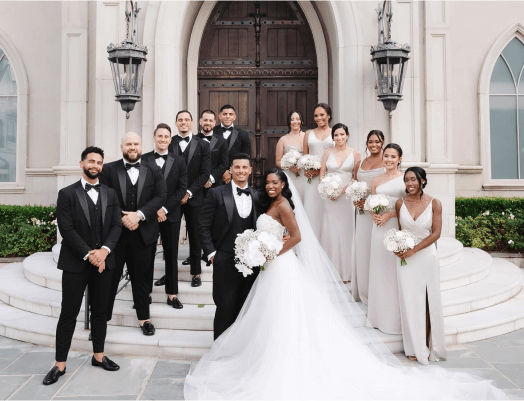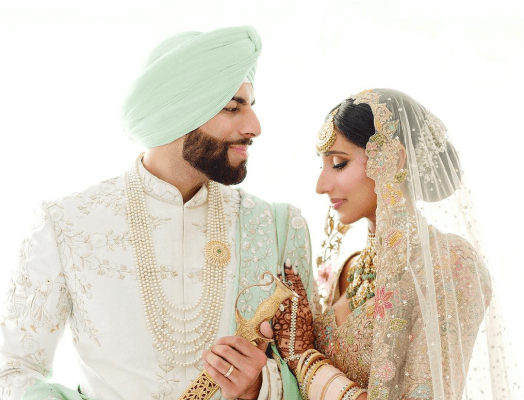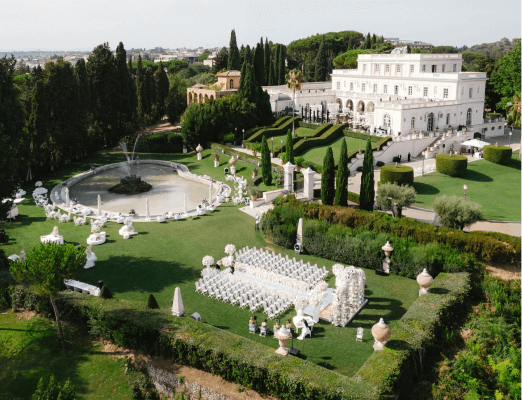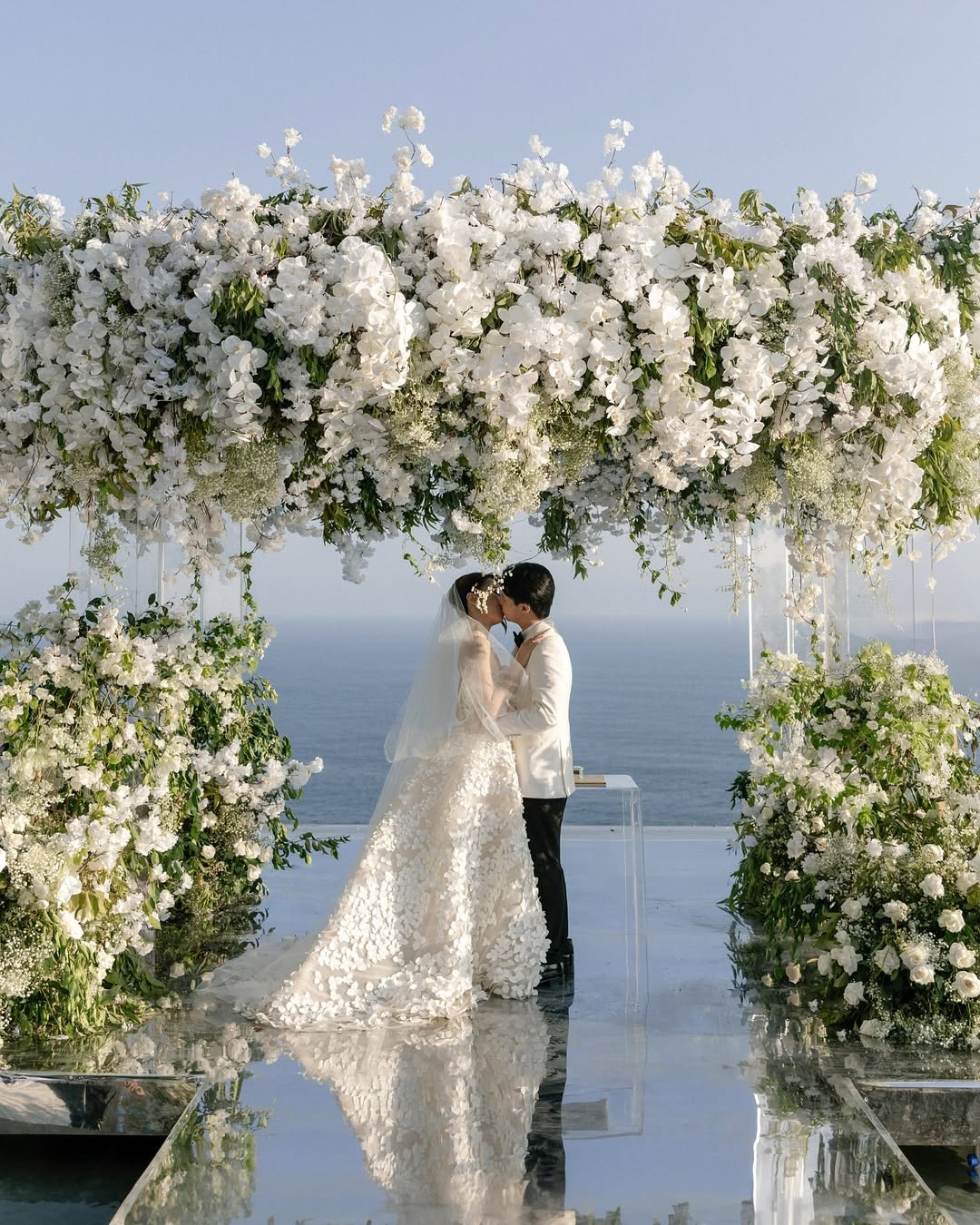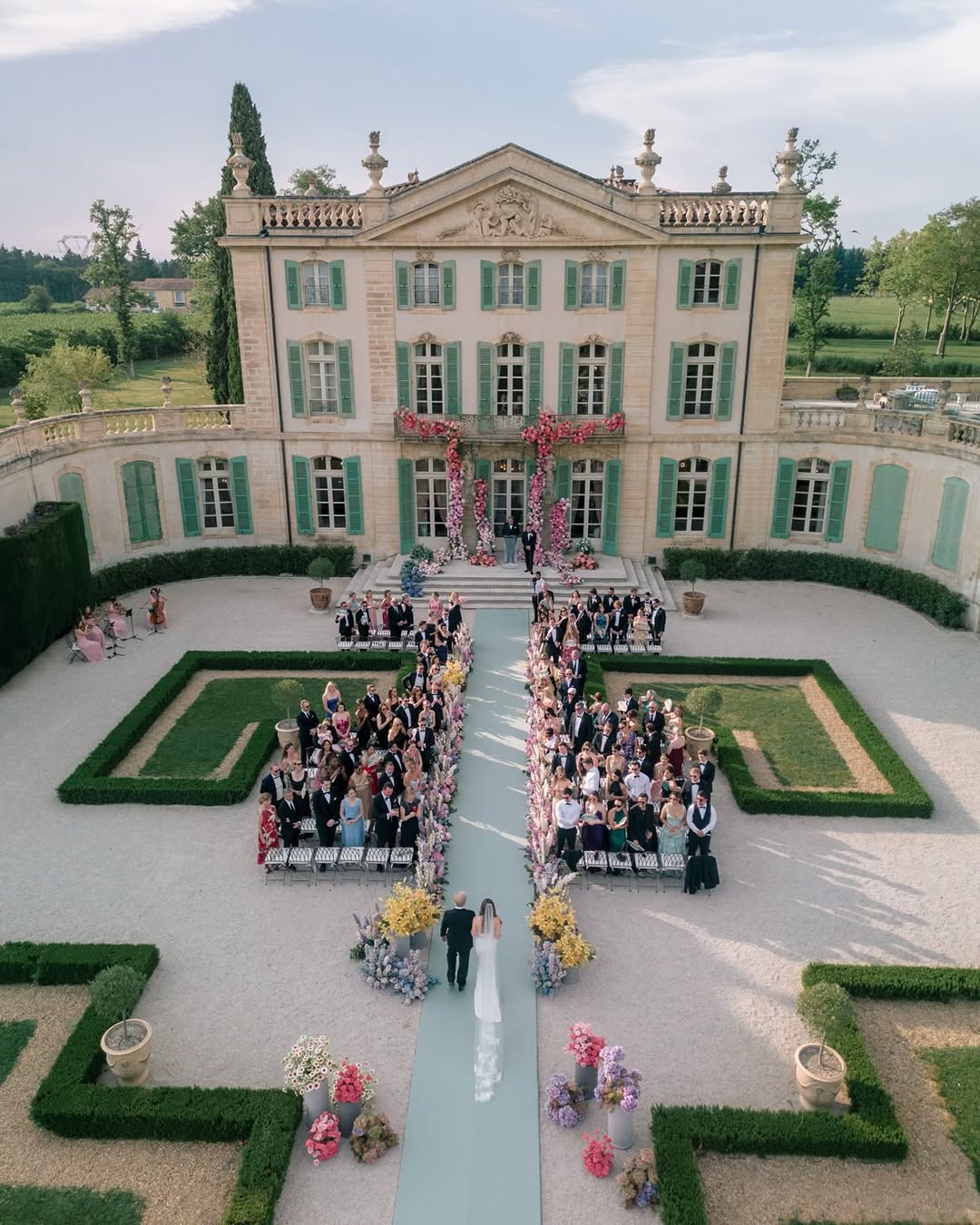Expert Advice on Personalizing Your Wedding Ceremony
- Author: Natali Grace Levine
- Reading time: 7 min 54 sec
- Publication date: 11/10/2025
- Updated: 12/18/2025
- Start with a Feeling, Not a Pinterest Board
- Forget What You "Should" Do
- When Logistics Become Love Letters
- Music: Your Ceremony's Secret Weapon
- When Cultures Collide (Beautifully)
- Words that Actually Matter
- The Beauty of Things Going "Wrong"
- Rituals that Resonate
- Finding Your Voice in the Noise
- Working with the Right People
- The Afterglow Effect
Last month, a bride walked down the aisle to "Canon in D" while her officiant recited the same script he'd used for 200 other couples. By the time they got to "speak now or forever hold your peace," half the guests were checking their phones.
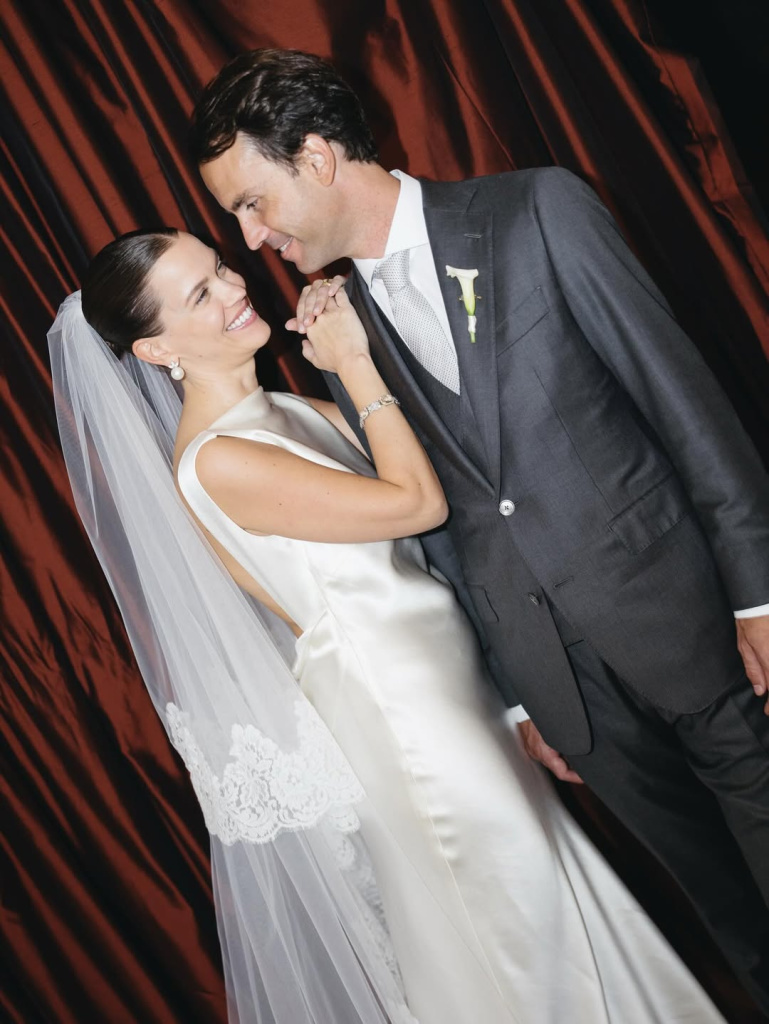

Three weeks later, at another wedding, the groom entered with his entire extended family singing a song from his grandmother's homeland. The bride walked in to her best friend playing violin—the same song they'd busked with in college. There wasn't a dry eye in the house, and people are still talking about it.
What made the difference? The second couple understood something the first didn't: their ceremony wasn't a performance for other people. It was the moment their love story became official, and it needed to sound like them.
Four top wedding planners shared what they've learned from creating hundreds of ceremonies—some forgettable, others legendary. Here's what separates the two.
Find Your Perfect Wedding Vendors
Start with a Feeling, Not a Pinterest Board


Sira Antequera has witnessed countless couples get lost in the visual details while missing the emotional core entirely. Her approach cuts straight through the noise:
 Every ceremony I design begins with a question that goes beyond aesthetics: What needs to be felt? What must never be forgotten?
Every ceremony I design begins with a question that goes beyond aesthetics: What needs to be felt? What must never be forgotten?
It's a simple question that most couples never ask themselves. While they're busy choosing between ivory and champagne linens, they're missing the real decision: What should your ceremony feel like? Intimate and whispered? Joyful and loud? Sacred and quiet? "For me, the ceremony is the soul of the wedding — a moment suspended in time where everything else fades, and only meaning remains. Personalizing it requires deep listening and emotional insight. I don’t simply insert rituals; I craft emotional architecture," Sira explains. Once couples nail that feeling, everything else falls into place. The music, the layout, the readings, even the time of day suddenly have direction.
Think of it this way: If your ceremony were a movie scene, what would the audience feel watching it? That's your north star.
Forget What You "Should" Do


Tradition can be a beautiful thing, but it can also be a cage. Sara Tusset has seen too many couples crush their authentic impulses under the weight of "but this is how it's always been done."
Her philosophy is refreshingly direct: "My advice is to always start with you—not with what's 'usually done.'" We’ve seen couples who walked backwards down the aisle because that's how they met (literally bumping into each other), ceremonies conducted entirely in two languages, and brides who entered alone because they damn well wanted to. "The most emotional ceremonies are rarely the most formal or flawless ones,"Sara observes. "They're the ones that feel real—where every choice reflects the couple's story, values, culture, or simply their way of being in the world."
The team at Le Petit House echoes this sentiment: "Don't feel pressured to follow traditions just because they are expected." They once worked with a groom who entered with his entire immediate family—parents, sisters, spouses, nieces, the works. Unconventional? Absolutely. Beautiful? Undeniably.
The question isn't whether something has been done before. It's whether it feels right for you.
When Logistics Become Love Letters
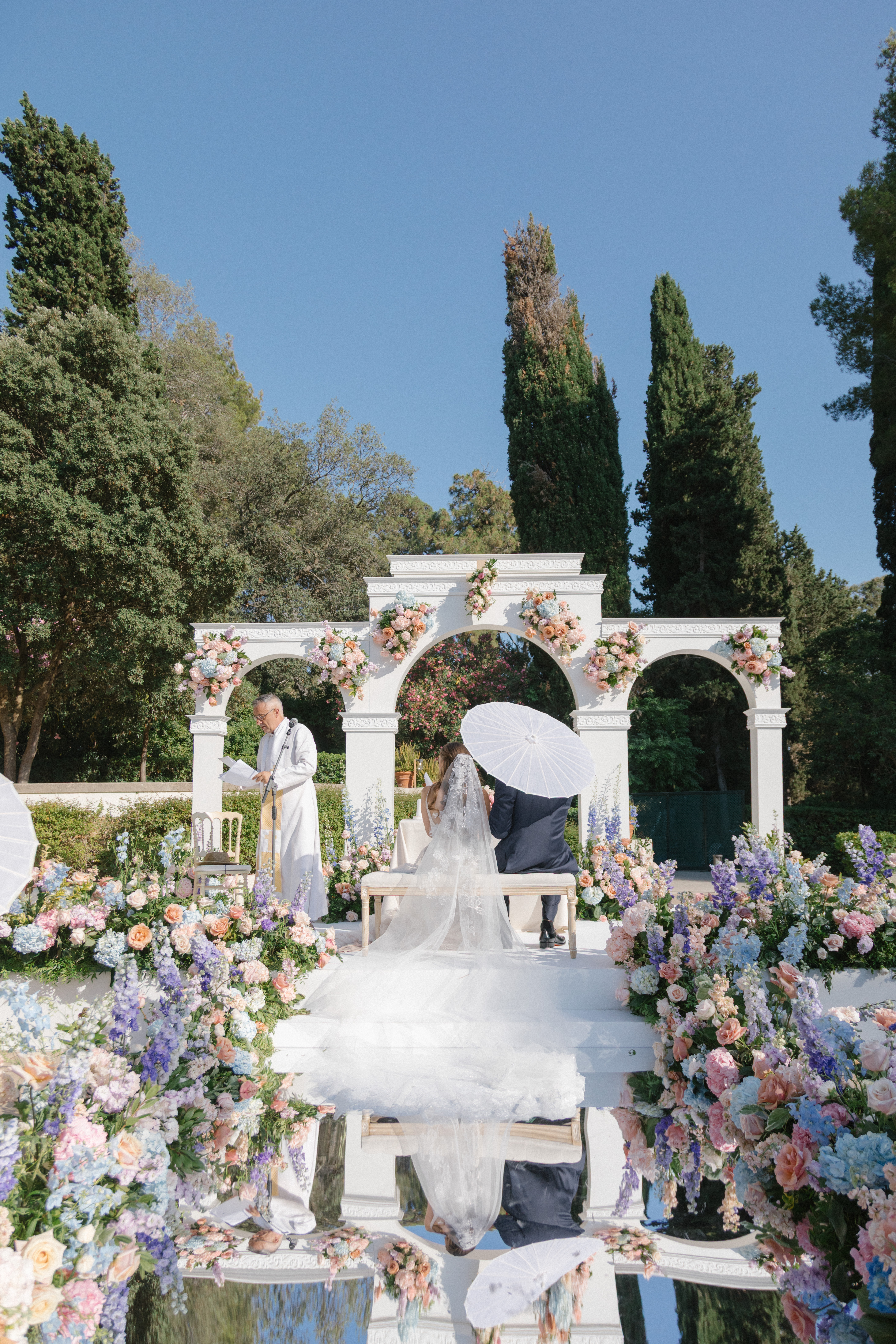

Sometimes the most romantic gesture is solving a practical problem with creativity. Celeste Moments worked with a couple who couldn't choose between a solemn church ceremony and the magic of an outdoor celebration. The solution became the story. "We decided to opt for an outdoor ceremony, bringing in the solemnity by creating arches, as in a church, and bringing in an altar," explains the team at Celeste Moments. "The catwalk leading to the altar was a mirror effect one, making the connection between the present moment and the eternal love in the sky."
That mirrored aisle wasn't just pretty—it was poetry. It solved their dilemma while creating something entirely their own.
Sira Antequera takes this concept further with her approach to ceremony layouts. She frequently incorporates "circular seating to foster intimacy, choreographed entrances that tell a story, or knowing how to beautifully blend the different languages spoken by guests—so that everyone becomes part of a shared spiritual experience." These aren't decorative choices—they're emotional architecture. Every decision serves the feeling you want to create.

Music: Your Ceremony's Secret Weapon


Most couples spend months choosing flowers that'll die in a week but fifteen minutes picking songs that'll soundtrack the most important moment of their lives. Celeste Moments learned this lesson the hard way:
 Don't underestimate the importance of music.
Don't underestimate the importance of music.
Sara Tusset has watched music transform ceremonies from ordinary to unforgettable. "A carefully designed soundtrack can transform the entire energy of the ceremony," she explains. "From acoustic guitar to a string quartet, or a live reinterpretation of a meaningful song—every note is chosen to reflect the mood and story."
But here's where it gets interesting. Le Petit House witnessed something magical when "the maid of honour sang the bride's processional song live as she walked down the aisle, then quietly joined the band. It was incredibly moving and made the moment unforgettable." Live music during the processional? It sounds risky, but for that couple, it was perfect. The lesson: your ceremony playlist isn't background noise—it's the emotional thread that weaves your entire story together.
When Cultures Collide (Beautifully)


Mixed heritage couples have a unique opportunity—they get to create something entirely new while honoring everything that came before. Le Petit House has guided many couples through this delicate balance:
 I love helping them find thoughtful ways to honour both of their backgrounds through music, rituals, or symbolic gestures that represent their unique union.
I love helping them find thoughtful ways to honour both of their backgrounds through music, rituals, or symbolic gestures that represent their unique union.
Sira Antequera takes this further, incorporating elements "like a Persian sofreh aghd, or a ritual that honors loved ones who are no longer physically present." These aren't token gestures—they're bridges between worlds, creating ceremonies where every guest feels included in something sacred.
The magic happens when couples stop seeing cultural differences as obstacles and start seeing them as opportunities to create something richer than either tradition alone. Your ceremony can be a beautiful fusion that honors where you both come from while celebrating where you're going together.
Words that Actually Matter



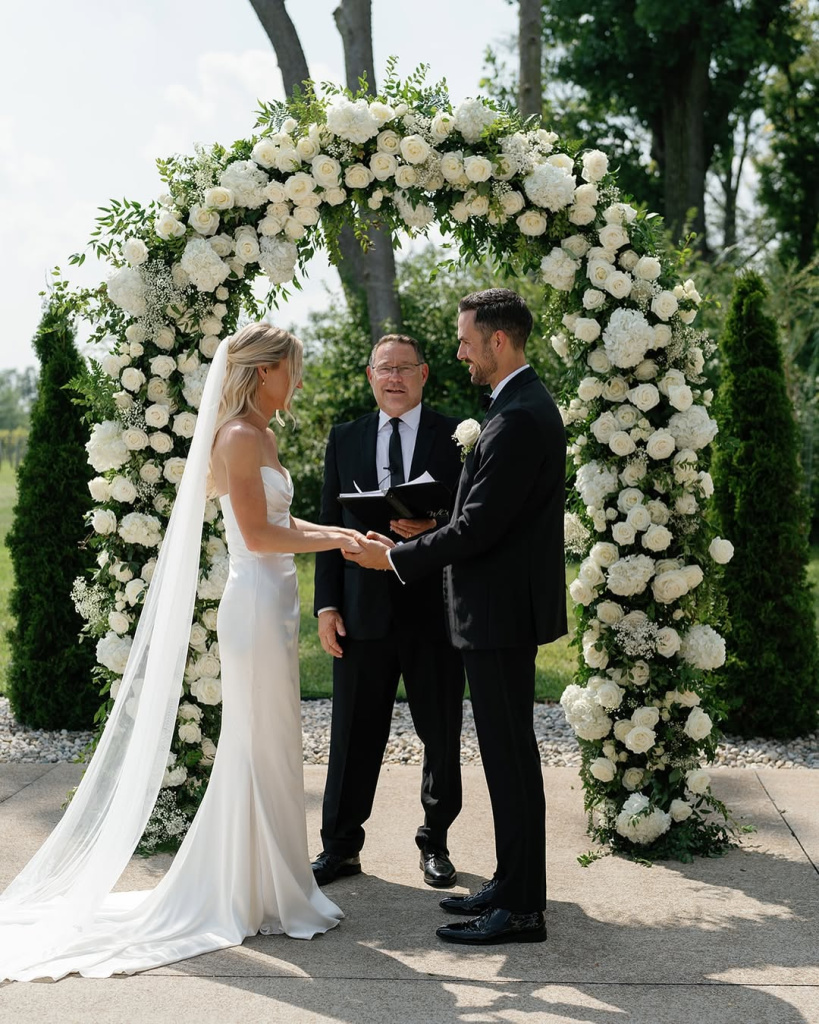
Here's an uncomfortable truth: most wedding vows sound like they were written by the same person. "I promise to love you in sickness and in health..." sounds familiar because it is. Your love story is unique—your vows should be too.
Sara Tusset encourages couples to break free from the template: "I always encourage couples to write their own vows or choose texts that go beyond the usual Pinterest ideas. Letters, book excerpts, lyrics, or even words written just for the occasion—when the words are real, the emotion is real." Terrified of public speaking? Sara has a solution:
 Write your own vows, even if they're short and simple—as long as they're yours. Honest words, spoken from the heart, are often the most powerful moment of the entire ceremony.
Write your own vows, even if they're short and simple—as long as they're yours. Honest words, spoken from the heart, are often the most powerful moment of the entire ceremony.
But personalization goes beyond just your vows. Sira Antequera often writes "bespoke texts for the officiant or help[s] shape the narrative flow so that it truly reflects the journey of the couple—not just who they are, but who they're becoming together." Your entire ceremony script can tell your story. Why wouldn't you want that?
The Beauty of Things Going "Wrong"


Sometimes the most perfect moments are the completely unplanned ones. Le Petit House experienced this during what could have been a disaster: "The bride's maid of honour had suffered a medical emergency just before the rehearsal, and the bride was heartbroken, she even considered postponing the wedding." But the story took an unexpected turn: "On the day of, as I was lining up the bridal party, the bride's aunt quietly whispered to me that the maid of honour was on her way to surprise the bride. She arrived with a walker, and as she made her entrance, there wasn't a dry eye in the room, including mine and the officiant's."
That moment—unscripted, unpolished, absolutely real—became the ceremony's emotional peak. Not because it was planned, but because it was true.
The takeaway? Leave room for magic. The best ceremonies have space for life to happen, for authentic emotion to surface, for your people to surprise you with their love.
Rituals that Resonate



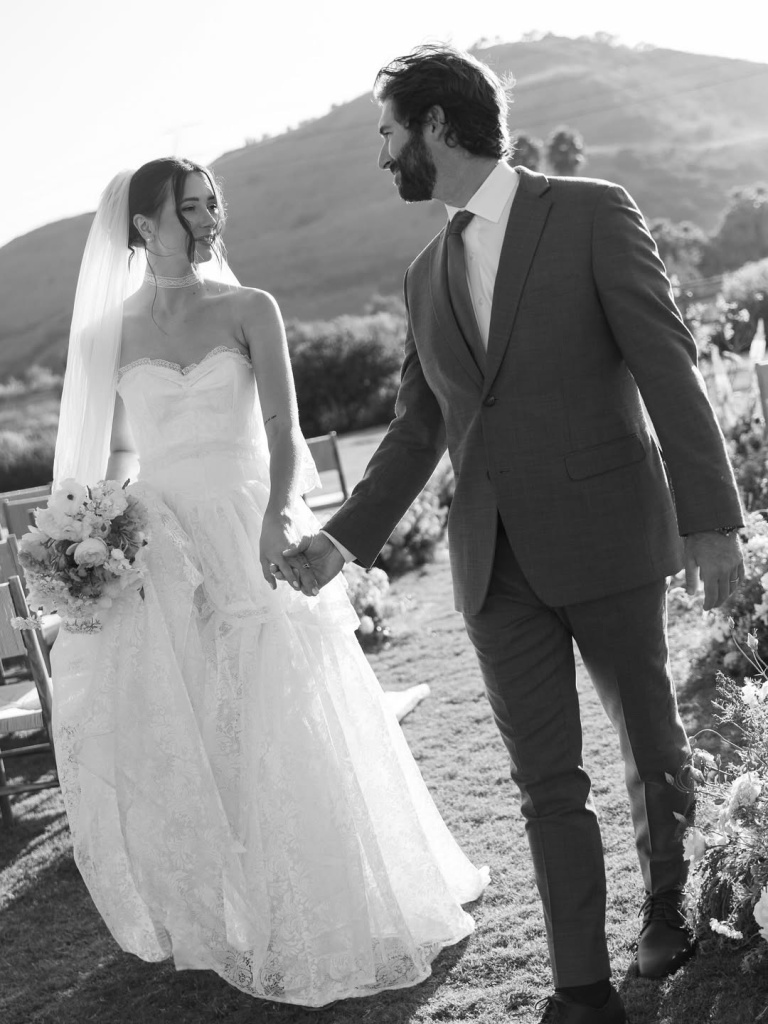
Symbolic gestures can be incredibly powerful, but only if they actually mean something to the couple involved. Sira Antequera describes a ceremony that gets this exactly right: "One ceremony I hold close to my heart took place by the sea, in a secluded enclave in Marbella. Just before the vows, we released hundreds of butterflies in memory of someone deeply loved who had passed away shortly before the wedding. There was a collective stillness—a moment where everyone could feel the presence of that absence. It was more than symbolic. It was shared grace."
What made this work wasn't the visual impact (though it was probably stunning). It was about creating space for grief and joy to coexist—something this particular couple needed in that moment. "That's the power of a ceremony when it's truly designed, not just performed. It becomes timeless,"Sira reflects.
Finding Your Voice in the Noise


With wedding advice coming from every direction, how do couples find their authentic voice? Celeste Moments keeps it refreshingly simple: "Opt for a religious ceremony only if it has real meaning to you, otherwise it's better to choose a secular ceremony. Don't shy away from less conformist things."
Translation: Stop doing things because you think you should. Start doing things because they feel right for your relationship. Sira Antequera puts it beautifully: "Don't aim to be original. Aim to be authentic. Go to the root of what matters to you, and give it shape. That's where beauty begins." This might mean arriving by boat because you met at the harbor. It might mean having the ceremony at sunset because that's when you got engaged. It might mean incorporating your dog because, let's face it, they're family too. "None of these were trends. They were truths—given form," as Sira says. And when couples embrace their truths, the results are always more compelling than following someone else's playbook.
Working with the Right People


The difference between a good planner and a great one? A great planner helps couples discover what they didn't even know they wanted. They act as emotional translators, taking messy, beautiful, complicated love stories and helping turn them into ceremonies that honor everything that brought a couple to this moment.
"I believe that, whatever the origin of the bride and groom or their religion, the ceremony is the key event of a wedding, and every detail must be worked on to ensure that it reflects the image of the couple," explains Celeste Moments.
But the crucial part is that they're not imposing their vision. "Work with someone who listens and guides you, not by imposing a style, but by helping you find the right way to express your truth,"Sara Tusset advises.
The best planners understand that their job isn't to create something impressive—it's to create something true. They guide couples through the process of translating their feelings into tangible experiences that their guests will remember long after the last dance.

The Afterglow Effect




A truly personalized ceremony doesn't just impact the wedding day—it shapes how couples remember their entire relationship. Sara Tusset designs ceremonies "to create an experience that moves people, but is also beautiful to live and to remember."
Years later, when you're telling your children about your wedding day, what story do you want to tell? The couple who followed all the rules and had a lovely, forgettable ceremony? Or the couple who trusted their instincts and created something so authentically them that guests are still talking about it?

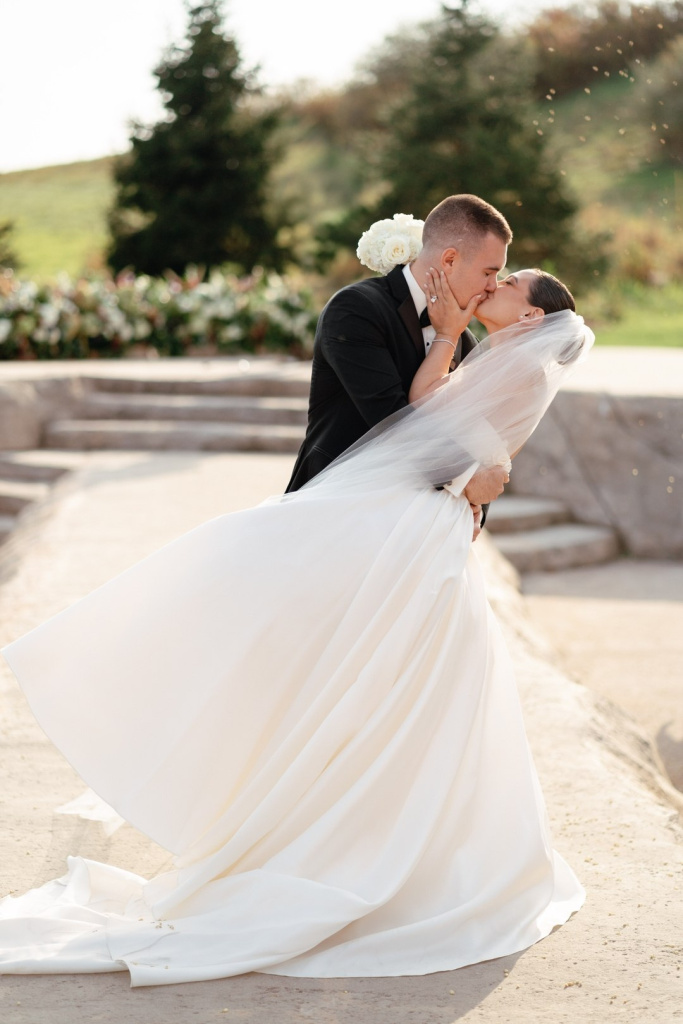
"Above all, I design ceremonies to be soulful, sensorial, and sacred, no matter the tradition. Because a meaningful ceremony stays with you forever,"Sira Antequera concludes.







